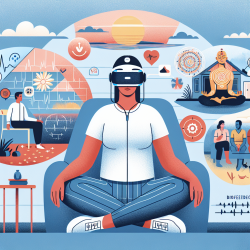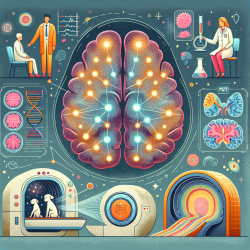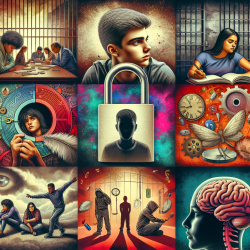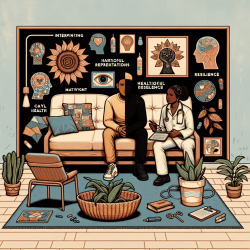In the evolving landscape of special education and therapy, practitioners are continuously seeking innovative methods to enhance the efficacy of their interventions. One promising approach is the integration of Virtual Reality (VR) biofeedback techniques, as demonstrated in the research study titled "Deep-Breathing Biofeedback Trainability in a Virtual-Reality Action Game: A Single-Case Design Study With Police Trainers." This study underscores the potential of VR environments to facilitate stress management and physiological control, which can be pivotal in therapy settings.
The study focused on training police trainers in deep-breathing biofeedback within a VR action game context. The findings revealed significant improvements in participants' breathing control and heart-rate variability (HRV), which translated into better performance under stress. These outcomes suggest that similar techniques could be beneficial in therapy, particularly for individuals with anxiety, ADHD, or other conditions that impact stress management and decision-making.
Here are some practical steps for integrating VR biofeedback techniques into your therapy practice:
- Incorporate VR Technology: Invest in VR equipment that can simulate engaging and controlled environments. This technology can be used to create scenarios that are both stimulating and manageable for clients, making the learning process more effective.
- Focus on Deep-Breathing Exercises: Utilize VR scenarios that encourage clients to practice deep-breathing techniques. This can help improve their HRV and overall stress management skills.
- Monitor Physiological Responses: Implement biofeedback mechanisms that provide real-time feedback on physiological parameters such as breathing rate and HRV. This feedback can help clients become more aware of their bodily responses and learn to control them better.
- Customize Scenarios: Tailor VR scenarios to meet the specific needs of your clients. For instance, create less intense scenarios for individuals with severe anxiety and gradually increase the complexity as their skills improve.
- Evaluate Progress: Regularly assess clients' progress by measuring changes in their physiological responses and performance in VR scenarios. This can help you adjust the therapy plan as needed to ensure optimal outcomes.
Encouraging further research in this area can also be beneficial. Exploring different VR scenarios and biofeedback techniques can lead to the development of more effective interventions tailored to various therapeutic needs. Additionally, collaborating with researchers and technology developers can help in creating advanced tools that are specifically designed for therapeutic use.
To read the original research paper, please follow this link: Deep-Breathing Biofeedback Trainability in a Virtual-Reality Action Game: A Single-Case Design Study With Police Trainers.










